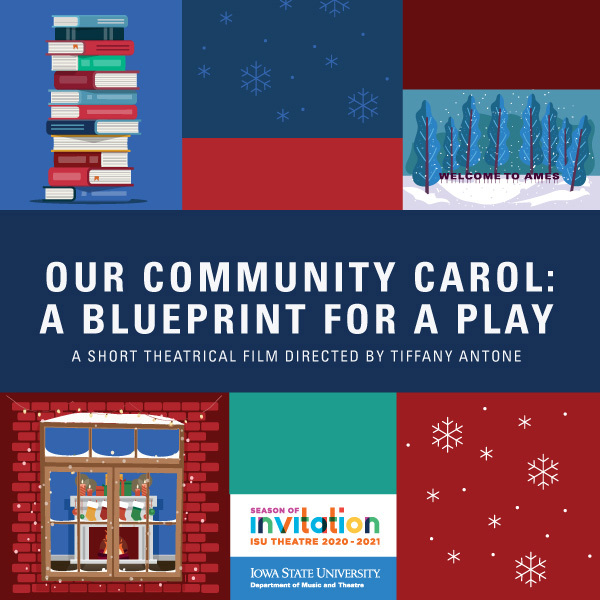For Jan Lauren Boyles, it seemed like a natural extension of what she has done since coming to Iowa State. The associate professor in the Greenlee School of Journalism and Communication jumped at the chance to turn her summer course into one of 55 offerings undergraduate students can choose for the upcoming winter session.
"When I first joined Iowa State in 2014, I was a big proponent of online and distance learning," she said. "I started teaching a class in the summer of 2015 and have done it every summer since then."
Boyles will teach the 400-level course Communication Technology and Social Change for the online session that opens Dec. 14 and concludes Jan. 21 with final exams. It's a six-week summer course, so Boyles had to pare it down to fit the 25-day winter session.
"It is a significant lift because you have to repackage the content, redesign a syllabus, create new content in a digital-only format and keep it updated," she said.
It took Boyles three months to prepare the course for the summer session and another month to have it ready for the winter session.
In mid-November, President Wendy Wintersteen said more than 2,500 students had enrolled in a winter session course.
Condensing a course
Sociology associate professor Monic Behnken will teach Deviant and Criminal Behavior, a 300-level course she previously taught in eight- and four-week sessions. Instructional designers in Engineering-LAS Online Learning helped Boyles and Behnken prepare their courses for the winter session.
"They helped align the learning outcomes and learning objectives so you are balancing between a course with enough substantial academic rigor and a manageable workload for students," Boyles said.
The Center for Excellence in Learning and Teaching also provides instructors with guides for teaching a condensed-format course.
Associate teaching professor in genetics, development and cell biology Sayali Kukday started at the end and worked backwards to determine the most important information, rather than trying to cram everything into the shorter timeframe. Kukday is teaching a 200-level introductory biology course.
"I have a pretty good sense of my learning objectives, and that is the starting point," she said. "Instead of worrying about all the content, you are providing the students with the tools to help them learn."
A single course in a short amount of time is a significant undertaking for students. She expects her students to spend about nine hours per course credit a week outside of class to complete the work, Kukday said.
Behnken presents her course through a case-based study model where students learn by reading specific criminal or court cases. She does not test, but finds other ways to assess student understanding.
"The students have a series of short quizzes," Behnken said. "Instead of long tests, this allows me to assess their knowledge fairly quickly and frequently throughout the course."
The final assessment also has a twist.
"Students have a chance to choose their own adventure," Behnken said. "They pull together everything they have learned and have the option to present their final project in a way that is authentic to them. I have had papers, videos and meme collages."
Boyles uses weekly assignments, small-group activities and discussion boards to keep students engaged on a day-to-day basis, and goes beyond basic memorization for her assessments.
"I lean toward narrative and essay exams so students have to synthesize the content and think deeply about it," she said.
Making them successful
Communication is key for both students and instructors to have success in the winter session, Boyles said.
"Be an active mentor, and your presence as an instructor is so important," she said. "I meet with every student in the class one-on-one in the first two weeks via Zoom. In those conversations I get to know them, but also they get to know me."
Kukday said building a sense of community is the biggest challenge so students have both the instructor and each other as resources.
"I send a survey out right away to get a sense of their goals, what they are feeling and what their schedule looks like," she said. "Based on the responses, I design weekly synchronous help sessions for students. I use a trivia platform to get them engaged and start conversations."
Kukday also is considering having students listen to a podcast on well-being before sharing their thoughts on it.
Future use
Kukday is taking a scientific approach to evaluating the winter session as the university decides if it will become a permanent part of the academic calendar.
"In the scientific world we make hypotheses, collect the data and then make conclusions about it," she said. "Once we determine if it was a success and if it facilitated student learning, we can make decisions about offering it again."
Boyles would be in favor of having a winter session in future years as a way to offer students academic flexibility and even relieve boredom over a long holiday break.
"They can still work or do other activities, but this is a nice added benefit," she said. "It also gives faculty a chance to become more comfortable and confident with online teaching through a single course."

